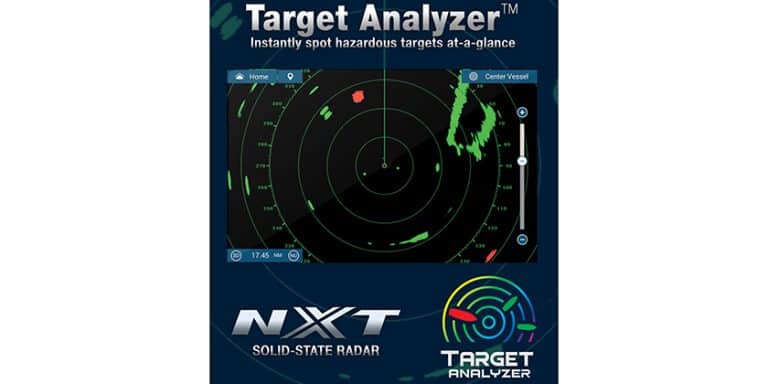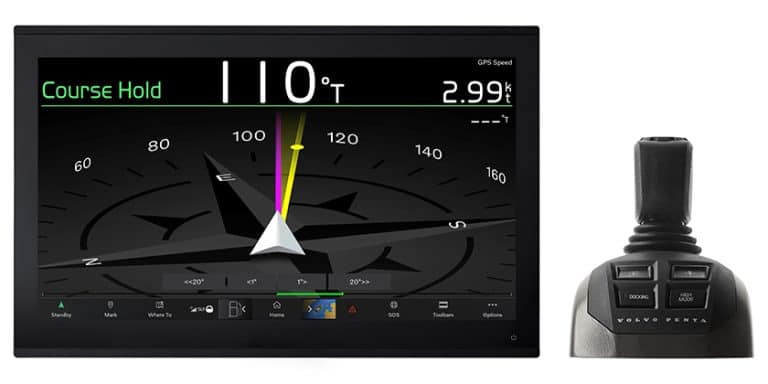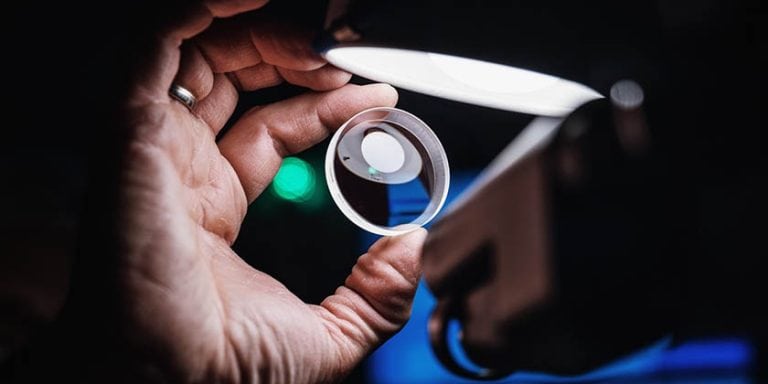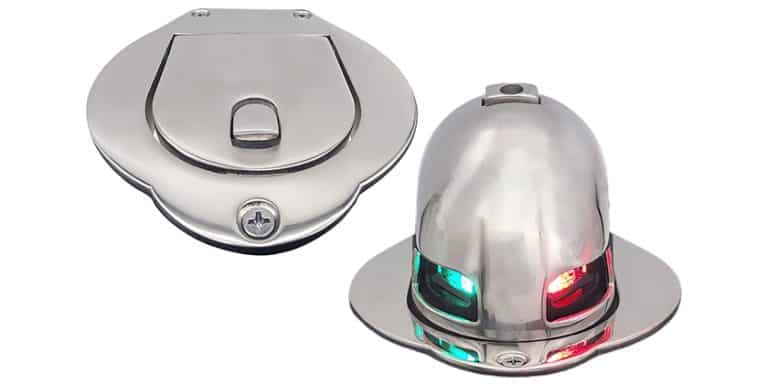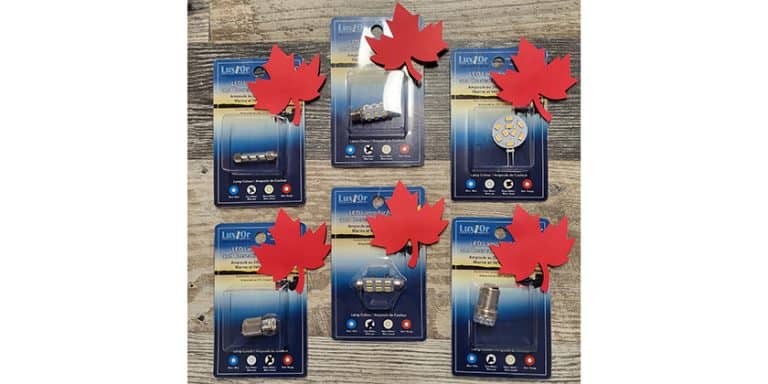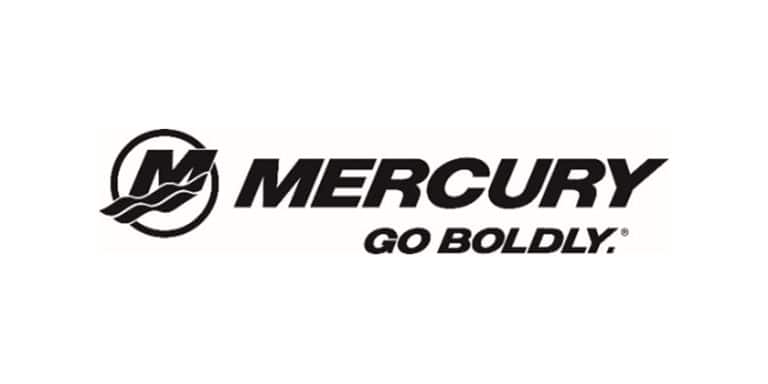Marine Binoculars: I See, Therefore I Am (Safe)
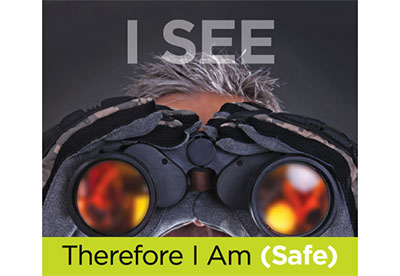
By Rob Macleod
Galileo made his first telescope in 1609, modelled after telescopes produced in other parts of Europe (primarily Holland) that could magnify objects three times. Later that same year, Galileo created a telescope that could magnify objects twenty times. He did very well after that.
Fast forward to 2015 and I am on the hunt for a second pair of binoculars for our boat, as we plan an extended cruise next fall. I say a second pair, because – it seems – Mary’s and my eyes are not aging in the same manner and at the same rate. So when either of us picks up the shared binoculars, we have to re-adjust them for our own use. I read recently that the way to avoid having your binoculars out of focus is to have your own.
In May, I was fortunate to have been able to attend staff and dealer training with Steiner Optics, a part of Beretta Holding Company. I learned more about binoculars in that one day than I had in my prior 40 years in sailing. Maybe it was because I was in class and I took notes (unlike 40 years prior while in university).
Following are some of the key attributes of effective marine binoculars we will look at in this article.
| Optics | Construction | Amenities |
| Magnification | Multi-coating | Compass |
| Objective lens | Types of focus | Range finder |
| Exit pupil | Eye relief | Floating straps |
| Field of View and Arc of View | Water and fog proofing | |
| Luminosity / Brightness | ||
| Twilight factor |
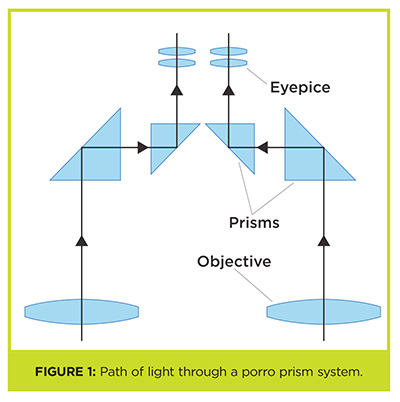 Optics
Optics
Binoculars are essentially two identical telescopes joined in parallel. At the front of each telescope is a lens, called the objective. The purpose of the objective is to gather light reflected from whatever object you are looking at, then bring that object to focus in the eyepiece, where the light from the object is formed into a visible image and magnified to take up a large portion of your eye’s retina. The magnification is determined by the focal length of the eyepiece – usually between 5x and 10x.
The image produced by each telescope is inverted. Binoculars use prisms between the objective and the eyepiece to correct the orientation of the image. Binocular prisms are blocks of glass that function as mirrors. Although a prism acts like a mirror, it does not have a mirror’s reflective backing. Prisms come in two models and use different types of glass.
To better understand the working principles take a look at the image above. Figure 1 shows the path of the light as it enters the objective lens, passes through the set of prisms that turn the image right side up, and finally leaves the eyepiece and enters the observer’s eye. (Of course, with binoculars, this would be ‘eyes’.) This process applies to all binoculars, no matter what model or size.
Figure 1 – Path of light through a porro prism system.
Magnification and Objective Lens
Most of us are familiar with the term “7×50” to describe binoculars, where “7” is the magnification or power and “50” is the diameter of the objective lens in millimetres. When looking through a pair of binoculars with 7x magnification, an object appears seven times larger than it is. So an object that is 700 feet away will appear to be only 100 feet away with a 7x magnification. A 7x magnification is also the greatest practical magnification usable in a moving environment like boating. Although binoculars come in 10x magnification and higher, these larger magnifications are unusable in most boating situations, simply because any viewed objects will appear to move around too much to be observable. The larger the objective lens, the more light it will transmit to your eyes and will deliver a brighter image.
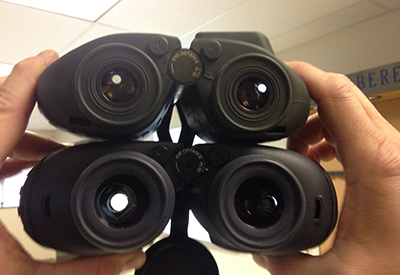 Exit Pupil
Exit Pupil
A key concept in understanding a 7×50 versus a 10×30 binocular is the instrument’s ability to transmit light and the eye’s ability to receive that light. In bright sunlight, the human eye can only accept a finite amount of light. In the bright light situations, the pupil closes down to as small as 2 mm to protect the eye. In low light situations, the pupil opens to approximately 5 mm at dusk and to 7 mm at night to let in more light. This 7 mm number becomes one of the first factors in determining the most suitable binocular for boating. The ‘exit pupil’ is the measured light emanating from binoculars and is a factor of the objective lens divided by the magnification. A 50 mm diameter divided by a magnification of 7x gives us an exit pupil measure of 7.1 – roughly the maximum diameter of the human pupil in low light. By the way, as we get older, the ability of the retina to adjust lessens as our eye muscles become less resilient. So, remember to take care of your eyes if you want to keep boating into those later years – where I am starting to find myself.
In figure 2, you can clearly see the exit pupil of a 7×30 (top) and 7×50 (bottom). The exit pupil of the 7×30 is 4.9 (30÷7) – just over half of the light of the 7×50 (50÷7 or 7.1). This means in low light situation, like when you are trying to find that unlit buoy just outside the harbour as the sun is rapidly setting, the 7×50 is your best bet.
Figure 2 – Exit pupil of 7×30 or 4.9 (top) and 7×50 or 7.1 (bottom)
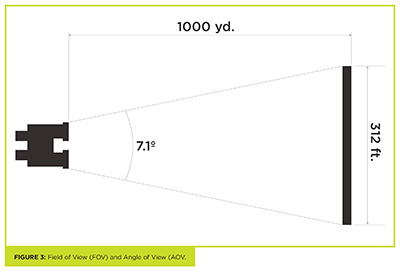 Field of View and Arc of View
Field of View and Arc of View
The field of view (FOV) is the width of the area visible through the binoculars at 1,000 meters or yards. If measured in degrees, the field of view is referred to as the arc of vision or arch of view (AOV) As the magnification increases, field of view (arc of vision) decreases. Most 7x binoculars have an arc of vision of 7 degrees. At 1,000 yards, each degree represents 52.7 feet, so a 7 degree arch of vision will show us just around 370 feet. Our normal sight is through approximately 120-degrees arc of vision (depending on our peripheral vision). Limiting our field of view to just 7 degrees, explains what makes locating objects with binoculars relatively difficult.
Figure 3 – Field of View (FOV) and Angle of View (AOV).
Prisms
Now let’s look at prisms and their role in finding that illusive unlit buoy. We all remember that early science class when we were introduced to prisms and their ability to break down white light into the spectrum of colours. Those were dispersive prisms – they dispersed light. The two primary types of prisms used in binoculars are roof-prism and porro-prism – both reflective prisms. Their role is to reflect light, in order to flip, invert, rotate, deviate or displace the light beam.
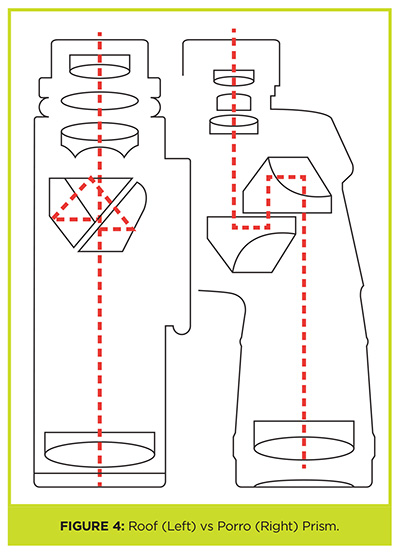 Roof-prisms are placed inline inside the optical tubes, allowing binoculars to be made small and light. This is a great advantage for hikers and birders, but this type of binocular is not the best for marine use.
Roof-prisms are placed inline inside the optical tubes, allowing binoculars to be made small and light. This is a great advantage for hikers and birders, but this type of binocular is not the best for marine use.
In roof-prism binocular design the light beam is split in two parts, then recombined. This process leads to “phase shifting”, meaning that less light is transmitted in the eyepiece and contrast is decreased. Besides, roof-prism binoculars are generally much more expensive than porro-prism binoculars of equal quality. Roof-prism binoculars are characterized by their long slim lines and are more prone to breaking.
Porro-prism binoculars align the objective lenses and eyepieces in an offset arrangement, with the objective lenses farther apart than the eyepieces. They offer a wide field of view and are more affordable than roof-prism binoculars. However, porro-prisms have a minor drawback: they are easier to knock out of alignment than roof prisms.
Prisms are made of two types of glass, BK-7 borosilicate flint glass and BaK-4 barium crown glass. For most designs, prisms made of BaK-4 are preferred over the standard BK-7 because they have a higher refractive index and give brighter and well-defined images.
To check for yourself the type of prisms in your binocular, hold it pointed towards a light source and take a look at the exit pupils. If the prisms are made of BaK-4 glass the exit pupils will be round and evenly illuminated. If the prisms are of BK-7 glass you will notice squarish, gray edges in the exit pupils.
BAK4 prisms are the highest quality available. BK-7 prisms (borosilicate glass) are also good quality, but brightness and definition fall off slightly at the edge of the field compared to BAK4. High quality optics makers, like Steiner, use flexible silicon mounts to absorb severe shock, impact and abuse without damage.
Figure 4 – Roof (left) vs Porro (right) Prism.
Twilight Factor
Twilight Factor is a numerical guide for comparing the low-light performance of optical instruments. To calculate twilight factor, multiply the diameter of the objective lens by the magnification then calculate the square root of the product. Twilight factor does not take into account optical qualities, such as light transmission, resolution and image contrast. For example, the Steiner Navigator Pro binoculars in Figure 6 have a twilight factor of 18.7. (50*7=350, √350=18.7) When you compare this to the twilight factor of a pair of 7×30 binoculars of 14.5, the larger objective lens provides 18% more light – a key factor when looking for that ever-elusive unlit buoy.
Construction
Multi-coating
In boating, you really need quality binoculars when conditions are at their worst. Lenses are coated with various materials to improve their ability to transmit light. A quality marine binocular will be fully multi-coated for maximum image brightness. A model that is multi-coated (i.e. some of the lenses multi-coated) has a higher brightness than a fully coated or single layer coating only model. Fully multi-coated costs considerably more to manufacture, but provides the highest level of light transmission.
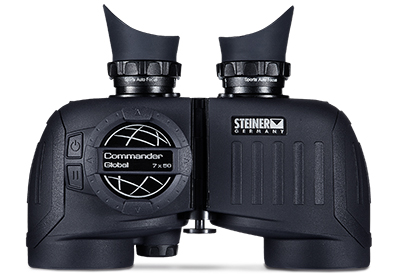 Focus
Focus
There are three focus systems on binoculars – individual, centre and auto focus. On binoculars with individual focus, each tube is focussed independently. With centre focus binoculars, after you adjust the dioptric correction (see side bar – Dominant Eye) you adjust both sides of the binoculars at the same time using either a centre wheel or paddle, to put your object in focus. With auto focus, the binoculars are in focus from a minimum distance (i.e. 20 yards) to infinity. Once they are adjusted for your eyes, there is no need change the focus when shifting from one object to another.
Eye relief
Eye relief (also called exit pupil distance) is the distance behind the eyepiece lens at which the image is in focus, and indicates how far the binoculars can be held from your eyes and still allow you to see the entire apparent field of view. In general, the longer the focal length of an eyepiece, the greater is the eye relief. Standard binoculars have eye relief ranging from only a few millimeters to 25 millimeters or more.
Long eye relief is especially necessary if you wear eyeglasses because glasses increase the distance between the lens and your eye. If your eyeglasses are for near or farsightedness, you can take them off and refocus the binocular to compensate.
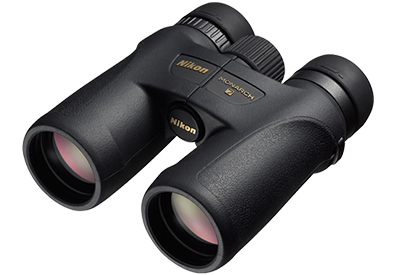 Waterproof and Floatation
Waterproof and Floatation
If you are using binoculars on a boat, they should be waterproof – even if you do not expect to go swimming with them. Waterproofing binoculars means replacing the air in the tubes with inert gas. Most manufacturers use nitrogen. Check to see if the binoculars you are considering are waterproof to casual water (i.e. rain or puddles on the deck) or are submersible – and to what depth. An added bonus of waterproofing is that the binoculars are also fog proof – an important consideration for those who like to be off at first light. If you are going to invest in waterproof binoculars, make sure they come with a floating neck strap.
Compasses and rangefinders
Installing a compass in binoculars really adds to the cost, but there are benefits. Being able to get a bearing of a lighthouse, without having to mess with the GPS is a benefit. In addition, objects not visible with a handheld compass may well be visible at a 7x magnification. Compasses can be either a bezel or digital style.
To use a range finder, you divide the height of an object that you know (see your chart or aids to navigation) by the points read on the reticle scale when you look through the binocular. Combine both of these features in the same binoculars, you can calculate your position easily with distance off and a single bearing.
| Key Feature |
Steiner Navigator Pro 7×30 |
Steiner Commander 7×50 |
Nikon 7x50CF WP |
| Focus System | Sports-Auto-Focus™ | Sports-Auto-Focus™ | Centre Focus |
| Close Focus | 66 | 66 | |
| Luminosity / Brightness | 18.4 | 51 | 50.4 |
| Exit Pupil | 4.3 | 7.1 | 7.1 |
| Field of View (1,000’) | 370 | 438 | 126 |
| Twilight Factor | 14.5 | 18.7 | 18.7 |
| Waterproof | Submersion to 16 ft. | Submersion to 33 ft | Waterproof 3 ft for 5 min |
| Weight | 18.3 oz. | 38.4 oz. | 39.5 oz. |
Dominant Eye

With both eyes open, objects appear as one. When we look through binoculars we may see a double image. The first adjustment is for interpupillary distance. This is the distance between your pupils. Rotating the binocular tubes around their centre axis allows you to match the distance between the centre of each tube with the distance between your pupils.
The second adjustment is the focus for your dominant eye. We all have one eye that is stronger than the other. To determine your dominant eye, make the OK sign with your thumb and fingers. Looking through both eyes, centre on an object. First close one eye. If the object remains in the same place, relative to your fingers – the eye you have open is your dominant eye. If the object appears to move, then your open eye is your non-dominant eye. Now open your first eye and close the other to confirm your dominant eye.
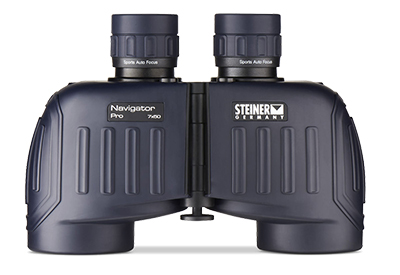 When making the dioptric correction – the third adjustment – it is important to keep both eyes open. If you close one eye, then the other eye will adjust to make up the difference. This may mean that you are setting the binoculars for your non-dominant eye. By blocking off the non-adjustable tube, with your hand or with the lens cap, you can keep both eyes open and balanced and achieve the dioptric correction you need to see clearly. Making the dioptric correction will reduce eyestrain and allow you to look through your binoculars longer and with greater clarity.
When making the dioptric correction – the third adjustment – it is important to keep both eyes open. If you close one eye, then the other eye will adjust to make up the difference. This may mean that you are setting the binoculars for your non-dominant eye. By blocking off the non-adjustable tube, with your hand or with the lens cap, you can keep both eyes open and balanced and achieve the dioptric correction you need to see clearly. Making the dioptric correction will reduce eyestrain and allow you to look through your binoculars longer and with greater clarity.

